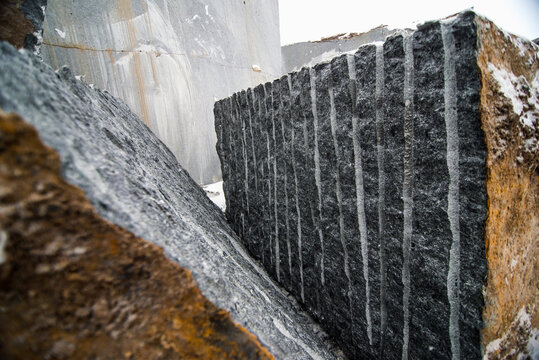The Hidden Gems: Discovering Granite Quarries in South Africa
The Hidden Gems: Discovering Granite Quarries in South Africa
Blog Article
Discovering the Rich History and Lasting Practices of Granite Quarrying
As we stand on the precipice of discovering the elaborate tapestry of granite quarrying, a journey through time discloses not just the physical act of removing stone however also the cultural and historical significance woven right into the really material of this method. From the ancient beginnings that laid the structure for contemporary quarrying methods to the sustainable techniques that are shaping the future of this market, each carve mark on granite surfaces narrates waiting to be unearthed (granite quarries in south africa). The tradition of granite quarrying stretches far past mere extraction; it is a testament to human resourcefulness, durability, and the enduring attraction of this stunning rock
Ancient Beginnings of Granite Quarrying
Dating back to old human beings, the method of quarrying granite has actually been an indispensable component of human history and architectural development. The earliest proof of granite quarrying go back to ancient Egypt, where large pyramids and detailed sculptures were crafted from this resilient stone. The Egyptians utilized primitive devices to draw out granite blocks from quarries, showcasing the value of this product in their huge constructions.
Relocating forward in history, the Greeks also made considerable contributions to the quarrying of granite. The Greeks used granite in various architectural wonders, such as holy places and statues, showing their skill in shaping and carving this hardy stone. The Romans further fine-tuned the methods of quarrying granite, using advanced tools like chisels and hammers to extract and shape granite for their iconic frameworks.
Through the centuries, the practice of quarrying granite has actually advanced, with contemporary innovations improving effectiveness while keeping the timeless allure of this all-natural rock - granite quarries in south africa. From old people to contemporary home builders, the heritage of granite quarrying continues to shape our world
Evolution of Quarrying Techniques
The development of quarrying techniques has actually been noted by a continual progression in the direction of better performance and accuracy in removing granite. Early quarrying strategies involved manual labor with basic tools such as knives, hammers, and wedges to remove granite blocks from the earth.
In more recent times, the advent of equipment revolutionized the quarrying market, allowing quicker removal rates and raised productivity. Technologies such as diamond cable saws, high-pressure water jets, and pneumatically-driven drills have actually become common in modern-day quarries, enabling exact cutting and minimized waste. Advancements in computer-controlled devices and 3D modeling have maximized quarrying operations, leading to minimal ecological influence and enhanced sustainability methods. As the need for granite proceeds to increase, the evolution of quarrying strategies remains important to meeting industry needs effectively and sustainably.
Cultural Relevance of Granite
Granite holds an extensive cultural relevance throughout numerous people due to its enduring presence in architectural masterpieces and respected monoliths. From the impressive pyramids of Egypt to the elaborate makings of the Angkor Wat holy place look at here in Cambodia, granite has actually been a product of option for expressing majesty and long life in cultural heritage. In ancient Rome, granite columns decorated holy places and public buildings, representing stamina and permanence. The cultural relevance of granite prolongs beyond its physical features; it personifies strength, stability, and timelessness, making it a sign of enduring legacies and traditions.

Lasting Practices in Quarrying
Amidst the abundant history of granite quarrying and its cultural importance exists a growing emphasis on sustainable practices within the industry. As ecological understanding and problems about source deficiency have enhanced worldwide, the quarrying sector has significantly embraced lasting methods to lessen its influence on the environment and bordering neighborhoods.

Additionally, improvement and recovery of quarry websites post-extraction are integral to lasting techniques. By recovering quarried locations to a natural or useful state, such as developing wildlife environments or entertainment rooms, quarriers can counter the environmental footprint of their operations and contribute positively to the neighborhood environment.
Legacy of Granite Quarrying
With a historic background soaked in workmanship and commercial progress, what sustaining effect has granite quarrying left on the landscape of modern culture? The tradition of granite quarrying goes beyond plain extraction practices; it has formed architectural wonders, urban landscapes, and cultural heritage worldwide. The long lasting nature of granite has made it a recommended selection for monoliths, buildings, and framework, standing as a testimony to the ability and artistry of quarry workers throughout generations.
Furthermore, the economic footprint of granite quarrying can not be ignored. The sector continues to provide employment possibility and drive neighborhood economic situations in areas where granite extraction image source prevails. It has actually likewise stimulated technical advancements in quarrying techniques and devices, bring about a lot more reliable and sustainable methods.
In terms of sustainability, the tradition of granite quarrying includes efforts to alleviate environmental effects via improvement projects and accountable source monitoring. By balancing financial interests with ecological stewardship, the market strives to make sure that future generations can remain to gain from this enduring natural find here deposit.
Verdict

Report this page